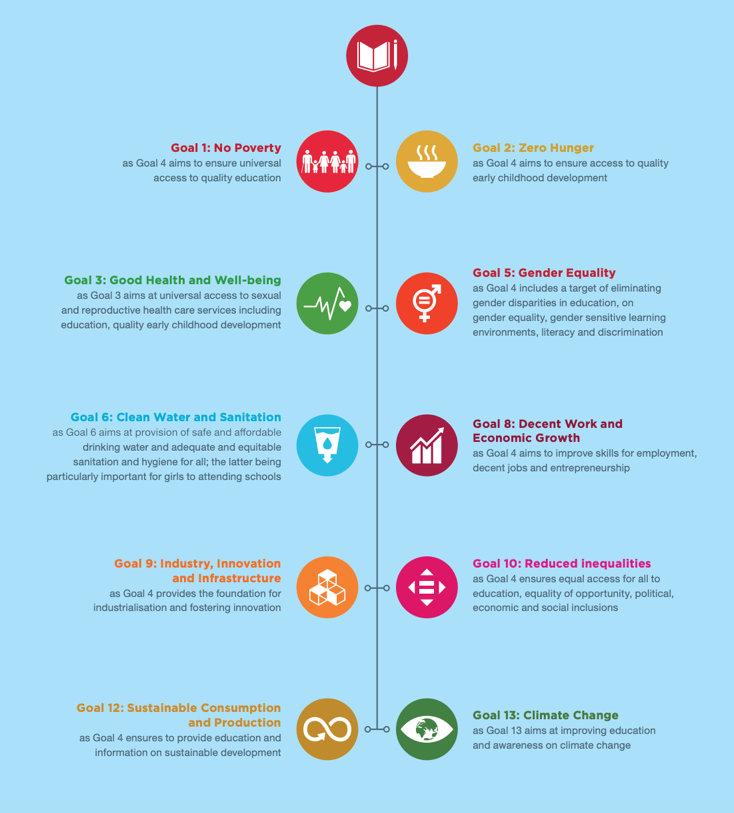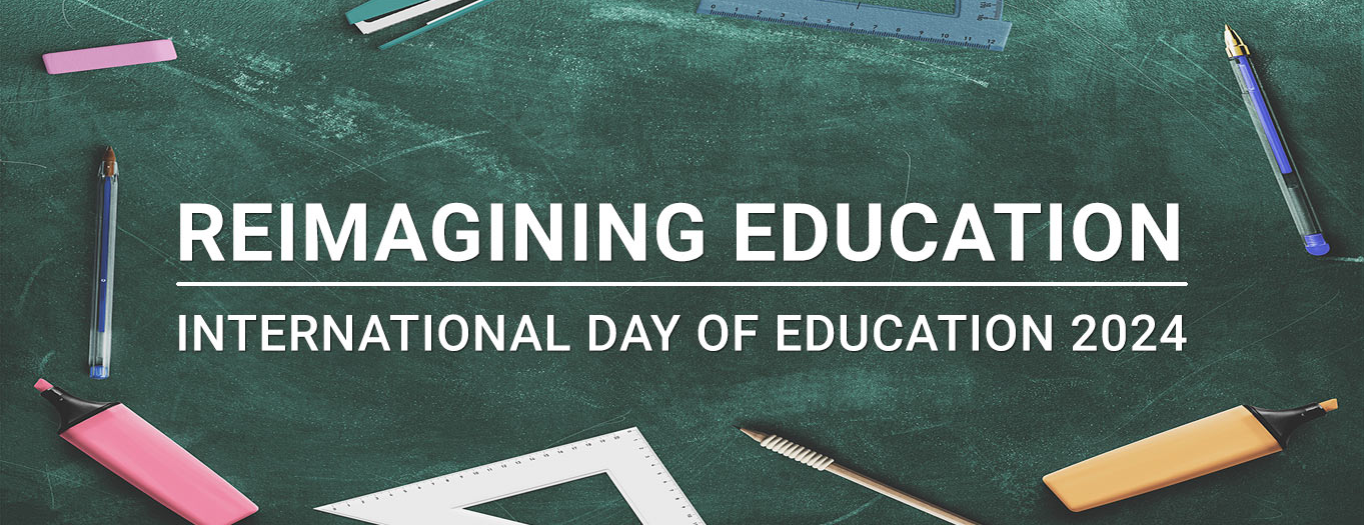
This essay is part of the series “Reimaging Education | International Day of Education 2024”.
India's demographic landscape, characterised by a substantial working-age population (15-64 years old), is a strategic advantage poised to propel the nation into an era of robust economic growth and heightened productivity. The projections for 2030 paint a picture of an impressive 1.04 billion individuals within this critical demographic bracket, promising a favourable low dependency ratio. This demographic dividend, however, is time-sensitive, urging the need for swift and well-informed policy implementation to harness its full potential.
India's education ecosystem is central to unlocking this demographic dividend, with approximately one-fourth of the population falling within the age group that should be actively engaged in educational pursuits. Given evolving skill requirements and a reliance on innovation, the emphasis must shift from mere enrolment figures to the quality of education. A dynamic, globalised, and sustainable skill set, crucial for navigating contemporary complexities, hinges on a robust foundation of high-quality education.
India's education ecosystem is central to unlocking this demographic dividend, with approximately one-fourth of the population falling within the age group that should be actively engaged in educational pursuits.
In this context, the UN Sustainable Development Goal (SDG) 4, focusing on Quality Education, emerges as a linchpin in advancing human capital in India. Recognised as a critical driver of economic advancement, SDG 4 not only contributes significantly to sustainable development but also plays a crucial role in unlocking India's economic potential. By prioritising human capital development, SDG 4 aims to achieve universal education from preschool to secondary levels to ensure a 100-percent Gross Enrolment Ratio (GER) in schools.
Figure 1: SDG 4 Interlinkages with other SDGs

Source: NITI Aayog
Empirical studies corroborate the correlation between human capital and economic growth in India. By utilising annual time series data from 1980 to 2017, a 2020 study reveals that both human and physical capital play a significant role in determining long-term economic development. In the short run, economic prosperity influences the levels of human and physical capital, trade volume, and the government's fiscal space. The analysis uses the Human Capital Index as an indicator of human capital levels and controls for physical capital, trade openness, and inflation, employing econometric techniques to assess long-term equilibrium.
The broader spectrum of Sustainable Development Goals (SDGs) 1-6 collectively forms a comprehensive strategy for enhancing human capital within the framework of sustainable development. These interconnected goals not only align with the broader SDG framework but also underscore the pivotal role of youth capital in India. In fact, the involvement of young people in SDG processes is recognised at the highest levels, highlighting the importance of dynamic representation and inclusivity for successful SDG implementation.
Table 1: SDG Indicators with Direct Impacts on the Youth Population
| Human Capital-Inducing SDGs |
Key Youth-Impacting Indicators |
| SDG 1 (No Poverty) aims to “eradicate poverty in all its forms around the world.” Progress was dampened in 2019-21 due to the COVID-19 pandemic. |
There are a variety of youth-impacting indicators for the ‘no poverty’ goal, such as, ‘employed population living under the international poverty line, by sex and age’; ‘proportion of the population living below the national poverty line’; ‘proportion of the population living in households with access to basic services’. |
| SDG 2 (Zero Hunger), that is ‘end hunger, achieve food security and improve nutrition and promote sustainable agriculture’ aims to ensure access by all people, particularly those who are poor and in vulnerable situations, including infants, to safe, nutritious, and sufficient food throughout the year. |
Youth-centric indicators include ‘prevalence of moderate to severe food insecurity in the population’; ‘prevalence of stunting among children under the age of 5’ and ‘prevalence of anaemia in women aged 15 to 49 years, based on pregnancy’. |
| SDG 3 (Good Health and Well-being) aims to ‘ensure healthy lives and promote well-being for all at all ages.’ |
The indicators that affect the youth population include ‘maternal mortality ratio’; neonatal mortality rate’; 'number of HIV-positive cases’; and ‘mortality rate attributed to cardiovascular diseases’. |
| SDG 4 (Quality Education) aims to ‘ensure inclusive and equitable quality education and promote lifelong learning opportunities for all.’ |
The available youth-related indicators measure the ‘proportion of children and young people that achieve a minimum proficiency in reading and mathematics, by sex’, ‘participation rate of youth and adults in formal and non-formal education and training in the past 12 months’, ‘completion rate by sex, location wealth quintile and education level in percentage’. |
| SDG 5 (Gender Equality) aims to ‘achieve gender equality and empower all women and girls.’ |
The youth measures cover indicators such as, ‘proportion of ever-partnered women and girls above 15 subjected to physical, sexual or mental violence’, ‘proportion of women aged 20-24 years who were in a union before the age 15 or 18’. |
| SDG 6 (Clean Water and Sanitation) intends to ’ensure availability and sustainable management of water and sanitation for all.’ It aims to achieve universal and equitable access to safe and affordable drinking water for all. |
The indicators that affect the youth include ‘proportion of domestic and industrial wastewater flows safely treated’, ‘change in water use efficiency over time’; and ‘degree of integrated water resource management’. |
Source: Authors’ own, data from UN Youth SDG Dashboard
Investing in these goals, particularly in education and health, becomes paramount for harnessing the potential of India's youth population. This strategic investment contributes to sustainable development by addressing economic, social, and environmental aspects, emphasising the interconnectedness of these crucial elements. Furthermore, emphasising the importance of skilling and quality education seamlessly aligns with the broader agenda of human capital enhancement within the framework of sustainable development. Nurturing a workforce adept at navigating the ever-changing landscape of expertise becomes instrumental in ensuring long-term economic resilience.
Emphasising the importance of skilling and quality education seamlessly aligns with the broader agenda of human capital enhancement within the framework of sustainable development.
For a developing nation like India, education emerges as a fundamental tool for creating the human capital necessary to sustain development in the 21st century. While significant progress has been made in enrolling children in schools, the focus must shift towards ensuring a quality education. Finally, in times of scarce budget outlays for implementing the SDGs, optimising financial resources towards educational infrastructure becomes of utmost importance. The quest for sustainable and inclusive development in India relies heavily on recognising the transformative power of education and strategically directing resources to bolster the nation's human capital.
Soumya Bhowmick is an Associate Fellow with the Centre for New Economic Diplomacy at the Observer Research Foundation
The views expressed above belong to the author(s). ORF research and analyses now available on Telegram! Click here to access our curated content — blogs, longforms and interviews.





 PREV
PREV



